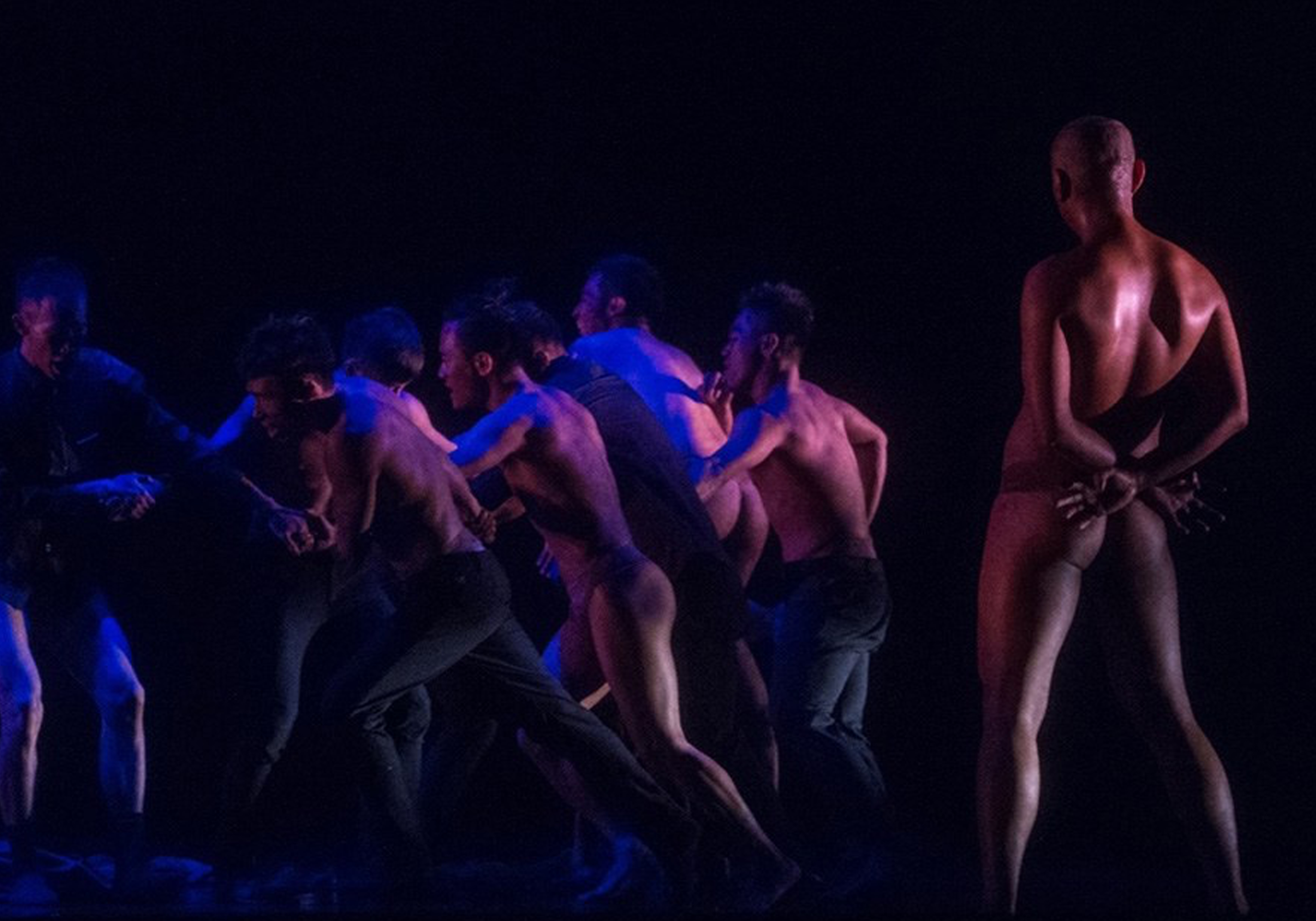「阿棲睞 Qaciljay」為排灣語音譯,表石頭之意,更隱含台灣東岸原鄉居住地景,座落於斜坡上的石頭。《阿棲睞 Qaciljay》以「山」為題目出發,並向部落學習傳統歌舞,也將舞者置入環境當中藉由「勞動」學習並累積。此為舞團第二號作品,學習傳統歌舞是舞團訓練中重要的一環,製作期間多次田野調查、訪問排灣族知識傳承者以深化舞作內涵,也立下未來創作可循的規則與方法。 2014年布拉瑞揚舞團成立於台東,聚焦於在地連結與文化涵養,由創團作品《拉歌 La Song》便邀請大量臺灣東部原住民青年表演者加入。《阿棲睞 Qaciljay》的開端,布拉瑞揚即帶著舞者回到自己的故鄉嘉蘭部落,向部落長者學習整地、收生薑,藉由勞動而涵養舞者的身體,期許舞者不只獲得技巧上的增進,而是熟成「成為人」的過程。
"Qaciljay" means stones in Paiwan language, which also refers to the landscape of indigenous villages in eastern Taiwan – the stones that sit on the slope. Qaciljay is a topic based on mountains. The dancers not only learned traditional songs and dances from the tribal community, they were also put into the environment to learn and accumulate experience through laboring. Qaciljay is the second project of Bulareyaung Dance Company. As learning traditional songs and dances is a very important part of the training in the dance company, their dancers conducted many field studies and interviewed tribespeople who have inherited great knowledge of Paiwan culture during the production period. This endeavor deepened the content of the dance piece and also set up a feasible rule and method for future creations.
Since its establishment in Taitung in 2014, Bulareyaung Dance Company has focused on local connection and cultural cultivation. As a result, in the dance company's first project La Song, half of the performers were indigenous youths from eastern Taiwan. In the beginning of Qaciljay, Bulareyaung brought the dancers back to their hometown, Buliblosan community. They went back to the mountains to learn from the tribal elders how to prepare soil for planting and how to harvest ginger in order to cultivate their bodies through laboring. It was not only an improvement of techniques but also a process of becoming a more mature person.
布拉瑞揚舞團 Bulareyaung Dance Company
成立於2014年,受羅曼菲舞蹈獎助金支持,由台灣原住民編舞家布拉瑞揚‧帕格勒法創立。在過去的二十年中,布拉瑞揚多次受邀為國內外許多舞團編舞並演出。儘管如此,當他意識到自己身為原住民、也是一個排灣族人時,「認同」的過程引領了他往原住民文化的路上前進,並開啟了一段新旅程。他決定回到家鄉,並建立了自己的舞團,為了與有才華的原住民青年工作,不僅可以跳舞,更有令人驚艷的歌聲,這也是布拉瑞揚舞團最重要且不同於一般現代舞團的特質,藉由文化上的田野調查,更深入的去看見文化裡頭蘊含的內在,發展屬於原住民特有的身體表述和語彙。成立舞團,是要將原住民的孩子以及舞團作品帶到國際上,分享給更多的觀眾。
Bulareyaung Dance Company was founded in 2014 by Taiwan’s indigenous choreographer Bulareyaung Pagarlava (aka “Bula”) in Taiwan. During the last two decades, Bula has been invited on numerous occasions to choreograph and perform for various contemporary dance companies both at home and abroad. However, his increasing awareness of his Paiwan identity has led him onto a new path. He decided to return to his hometown and established his own dance company to work with talented indigenous youths, who not only can dance, but also have stunning voices, an important characteristic of this company that sets them apart from other modern dance companies. Through researching his own culture in greater depth with his own people, they have developed their unique bodily expressions characteristic of the indigenous culture. Bula’s aim is to showcase his works performed by the indigenous company for a wider audience on the global stage.
布拉瑞揚‧帕格勒法
陳主惠
李建常
林秉豪
撒古流
亞粟・亞巫
林廣財
黃韋捷
林定、黃韋捷、許培根、張堅志、洪琮智、周堉睿、曾永傑、曾志浩、謝昊穎、陳忠仁
國家表演藝術中心國家兩廳院國家戲劇院
關鍵字
評審談作品
為生存而舞蹈,因舞蹈而感覺存在,兩者迴旋激盪出「斜坡上的石頭」
入圍理由 Comments from Nomination Committee
2016年布拉瑞揚推出的兩部舞作《阿棲睞》與《漂亮漂亮》,都受到本屆觀察提名委員的青睞,在討論過程中,兩部作品都各有強烈支持,形成了自己與自己的對決,一直到了最後一輪投票,《阿棲睞》終於勝出。《漂亮漂亮》感人討喜,視覺效果令人驚豔,但是《阿棲睞》在感人之外,震撼力道更勝一籌,並且挑戰了舞蹈的概念,以一再重覆的高度體能動作,讓舞者身體在一次一次的筋疲力竭中所產生的線條與節奏變化,配合同樣聲嘶力竭的吟唱,最後讓整部舞蹈形成一氣呵成的張力與完整!以此編舞概念來闡述原住民與大地的合而為一,兼具哲學與美學上的意涵,為生存而舞蹈,因舞蹈而感覺存在,兩者迴旋激盪出「斜坡上的石頭」(「阿棲睞」一詞原意)的雄壯與真情,令人屏息動容。(主筆/郭強生)
The two works that Bulareyaung presented in 2016, Qaciljay and Colors, have both won the praises of the nomination committee members this year. During the discussion, both works have been strongly supported by different members as well, making the two works each other's rivals. Eventually, Qaciljay won in the last round of voting. While Colors is touching and approachable with its stunning visual presentation, Qaciljay is not only touching but also possesses a more impactful force. It challenges the concept of dance and adopts repetitive, physically demanding movements, creating the work's tension and completeness in one go by integrating the variations of line and rhythm produced by the dancers' bodies through repeated, exhausting movements and roaring chanting. The choreographic concept of the dance illustrates the union of the indigenous people and the earth, embodying both philosophical and aesthetic significance. They dance to survive, and own that sense of being alive because of dancing. Both forces collide and create the magnificence and true emotions of "the stone on the slope" (the meaning of "qaciljay"), making the work genuinely moving and breath-taking. (Commentator: KUO Chiang-Sheng )






